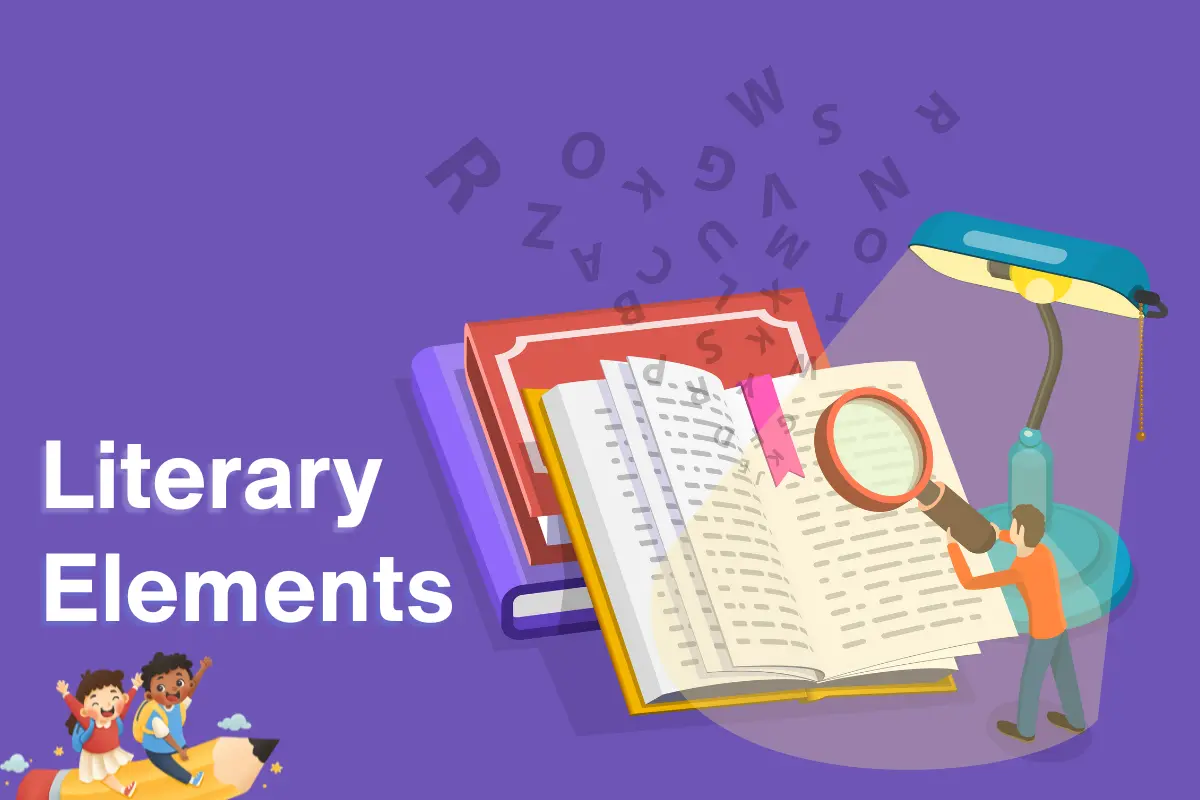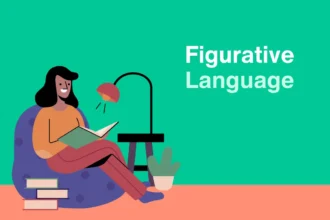What Is Figurative Language? With 9 Powerful Examples
Struggling to understand figurative language? Discover its types, meanings, and real-world examples to enhance your writing and comprehension!

Zannat Mou
Last updated on Apr 16th, 2025
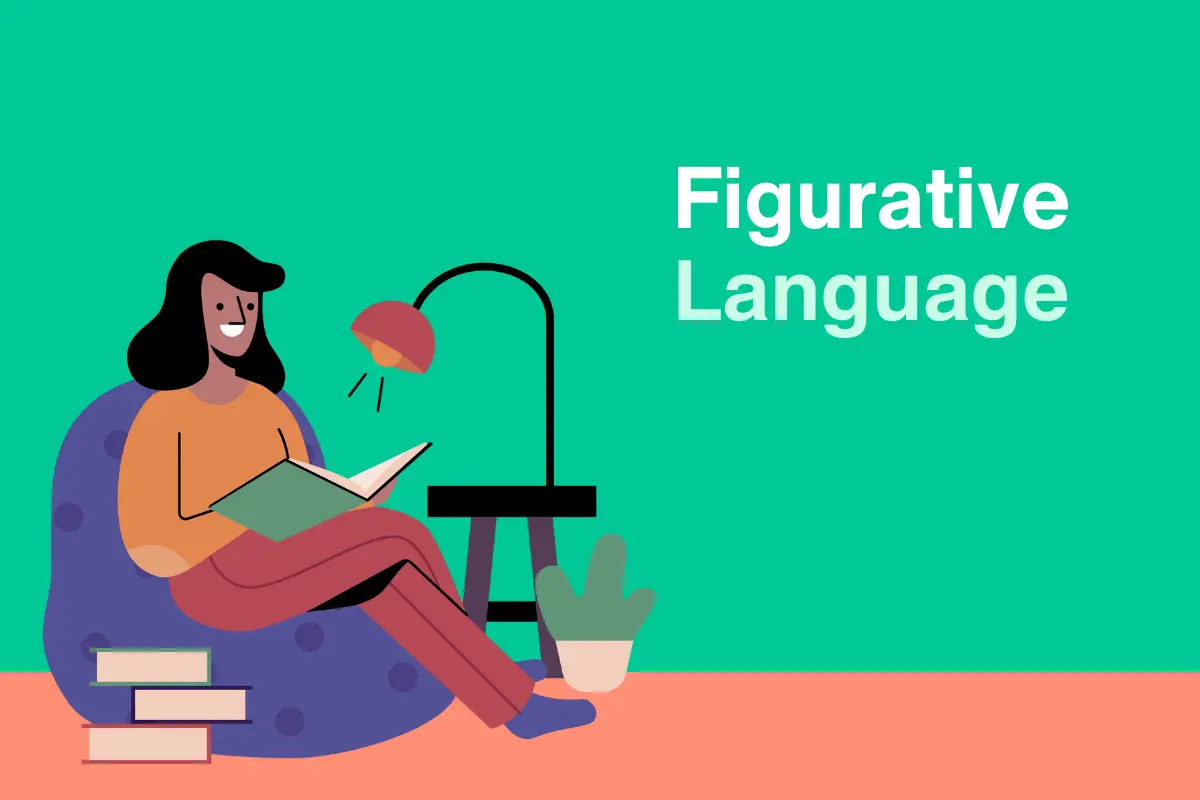
When you click on affiliate links on QuillMuse.com and make a purchase, you won’t pay a penny more, but we’ll get a small commission—this helps us keep up with publishing valuable content on QuillMuse. Read More.
Table of Contents
Figurative language is a lively and expressive form that enriches writing by going beyond literal meanings to create emotional responses. An author can express more intricate ideas vividly and artistically using various techniques, including metaphors, similes, personification, and hyperbole.
This blog post delves into the definition and types of figurative language, giving interesting examples to show how these devices convert normal writing into interesting and imaginative storytelling, making the text more engaging and striking for readers.
What is Figurative Language?
Do you know what a figurative language is? Figurative language meaning? Let’s talk about the definition or meaning of figurative language.
A figurative language is a tool in the literature employed to express ideas and emotions more vividly and creatively than the literal meaning of words. It consists of metaphor, simile, personification, hyperbole, and other figures of speech that create more impressive and engaging expressions.
Personification illustrates this concept very vividly. For example, instead of saying “Time flies,” you can say “Time is a thief.” The latter makes it more graphic since it helps the reader see what you mean rather than just telling him what is happening.
The employment of figurative language aims at enriching text in such ways as deepening and giving multiple interpretations to superficially simple statements for engagement and resonance.
Writers achieve this through utilizing techniques in creating images or invoking sensory experiences, as well as through direct dialogues (Ganakumaran, 2007).
The device above is effectively practiced not only in poetry but also in prose for an improved audience’s understanding and interpretation of the reading material.
How to Use Figurative Language
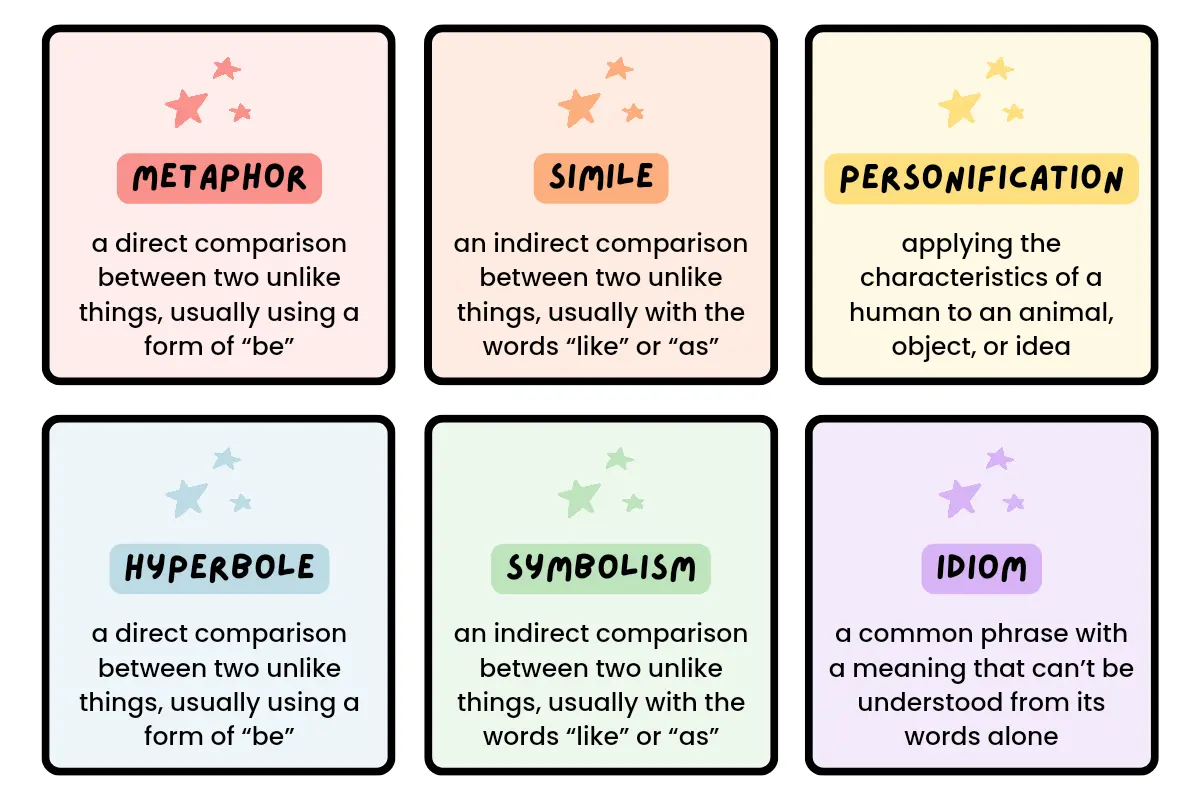
The effective use of figurative language can enrich your creative writing by making it more lively and interesting. Here is how you can use figurative language in your writing:
1. Hyperboles: Compare two unlike things or like to show the similarity between them. For example, “She slept like a baby.” The implied comparison here is her (the subject’s) peaceful sleep and the way a baby sleeps.
2. Similes: Help to create vivid images by comparing two different things using “like” or “as.” For example, ‘Her smile was as bright as the sun” makes a clear and relatable point.
3. Personification: These are non-human objects or ideas that you can endow with traits that are specifically human. For example, “The wind whispered through the trees” gives a chance to think that the wind is alive and able to speak.
4. Hyperbole: You can exaggerate to make your point more forceful. For instance, “I’ve told you a million times” is an exaggeration used to emphasize how often.
5. Symbolism: Objects, characters, or events are used to convey meanings beyond the literal. For example, a dove often represents peace.
6. Alliteration and assonance: Repetition of consonant (consonant sounds) or vowel sounds (assonance) to achieve a particular effect in terms of rhythm and rhyme. For example, “She sells seashells by the seashore” applies alliteration.
Types of Figurative Language with Examples
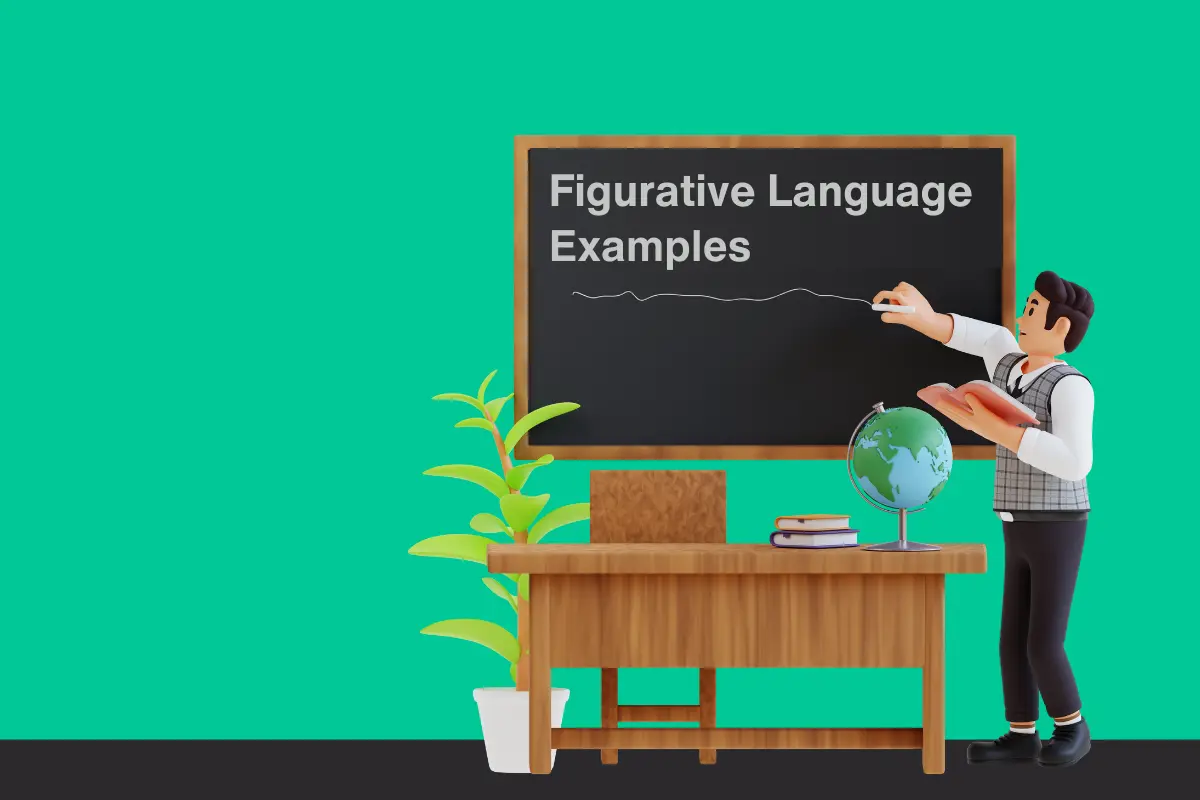
Here, we present the tenth type of figurative language in the following manner:
1. Simile: A simile represents a comparison of two unlike things by use of “like” or “as” (for example, ‘A simile is as easy as pie’).
2. Metaphor: Metaphor is doing this without using ‘like’ or ‘as’; it can be seen in such an example as “Hope is a thing with feathers”. “The world’s a stage, and we are merely players.” In this metaphor, the world is likened to a stage and the people to actors, so it implies that when you watch a play, everyone has roles to play.
3. Personification: it imparts human attributes to non-human objects or ideas, as shown by the wind that whispered among the trees.
4. Understatement: It is when you belittle something of significance to yourself (for example, ‘it’s just a cold’ when it is cancer).
5. Onomatopoeia: Onomatopoeia is a word that suggests the source of the sound it describes (example: “buzz” or “clang”).
6. Alliteration: Alliteration is when two or more words in a line or verse share the same initial consonant sound (she sells seashells by the seashore or he lives happily at that place).
7. Irony: Irony is a figure of speech that uses words to express something other than and especially the opposite effect, as “What a fine day!” said on seeing it rain hard.
8. Oxymoron: Oxymoron combines two contradictory words (for example, cruel kindness, living dead).
9. Idiom: An idiom is a figurative expression in which the meaning of any individual word has no connection with the overall meaning of the phrase (example: It’s raining buckets).
Learn more about examples of figurative language.
15 Advantages of Figurative Language
Here are 15 advantages of figurative language that can be helpful for writing and communication.
1. Enhances Imagery: This creates vivid and dynamic pictures in the reader’s mind so that the descriptions are more engaging.
2. Expresses Emotions: It makes the reader emotionally involved, which means they not only read but also feel what is written about.
3. Provides Depth and Multiple Interpretation Levels: Expresses difficult ideas and themes straightforwardly, so readers are forced to dig into possible interpretations.
4. Makes Writing More Persuasive: It develops the emotional power and attractiveness of arguments so they are more forceful and easier to remember.
5. Stimulates Imagination: Direct readers to use creative thinking and picturing of scenarios above the literal descriptions.
6. Clarifies Abstract Concepts: Makes arduous or abstract ideas easier to understand and learn by giving examples that one can learn from on the spot.
7. Creates Rhythm and Musicality: Incorporates a poetic quality into prose and poetry via devices such as alliteration, assonance, or consonance.
8. Engages Readers: It can arrest the common writing and interest of the reader, so you will get a more interesting read.
9. Enhances Descriptive Writing: Turn just plain descriptions into stories that are rich and evocative.
10. Expresses Symbolic Meaning: Employs symbols to express ideas beyond what words can do, giving the text extra depth.
11. Helps in Storytelling: Helps to create characters, settings, and plots that are more interesting and will be remembered easily.
12. Sustain Creativity: Forces writers to invent new approaches and to be innovative with expression; makes certain that creativity is preserved; does not support
13. Stresses Key Ideas: Acknowledges the important themes and messages and makes sure that the reader gets them. (embedded)
14. Helps create mood and atmosphere: provides an emotional background and overall feel, hence starting the tone of a piece.
15. Deploys Humor and Wit for Amplification: Uses informal language (sayings, idioms) and smart parallels to help a reader “see” the humor and wit in the text, thus making it more interesting.
With all these instruments of figurative language, readers can greatly appreciate the expressive part of the writer, which is very effective and touching.
Disadvantages of Figurative Language
Figurative language, despite making information more expressive and detailed, can cause certain issues in several cases, although the context is not the least of them. Here are 15 possible disadvantages:
1. Misinterpretation: Figurative language poses the risk of having different types of ambiguity, which may be completely misunderstood.
2. Cultural Differences: In the use of idioms, metaphors, and similes, different cultures may have this difficulty for people of other cultures.
3. Complexity: The text becomes more complex, which in turn can make it more difficult to understand, especially for non-native speakers and those with limited language proficiency.
4. Overuse: Figurative expressions employed excessively can clog the text and confuse the reader.
5. Literal Thinking: People who tend to think more literally, for example, those with certain cognitive differences, would have difficulty understanding figurative expressions.
6. Misleading: It can also be deceiving or give the wrong idea if one takes the figurative language literally or interprets it wrongly.
7. Clarity: The use of it may veil the main point and thereby lessen the clarity and precision of communication, especially in technical or scientific writing.
8. Formality: As you move into a formal context or professional writing, you should know that the use of figurative language might be considered unsuitable or unprofessional.
9. Explanation: Figurative language, such as metaphors or similes, refers to indirect descriptions that may require knowledge about general culture.
10. Educational Barriers: Those who are not well-versed in figurative language may be students or readers, and it can be a difficult task for them to decipher such material, thus impeding their learning process.
11. Context Dependence: The significance of figurative language often comes to light mainly in the context, which may be quite challenging if the context is represented inappropriately or if it is not understood completely.
12. Emotional Resonance: The emotions it can express may not be fitting or desired by everyone in all situations.
13. Simplicity or Complexity: The use of figurative language can either add to the simplicity of the message or obscure the message, which is easily explained.
14. Ambiguity in Translation: Deciphering figurative language in translation may pose a difficulty; as a result, the translated version can reflect neither the meaning nor the shades of the original text.
Figurative Language Anchor Chart
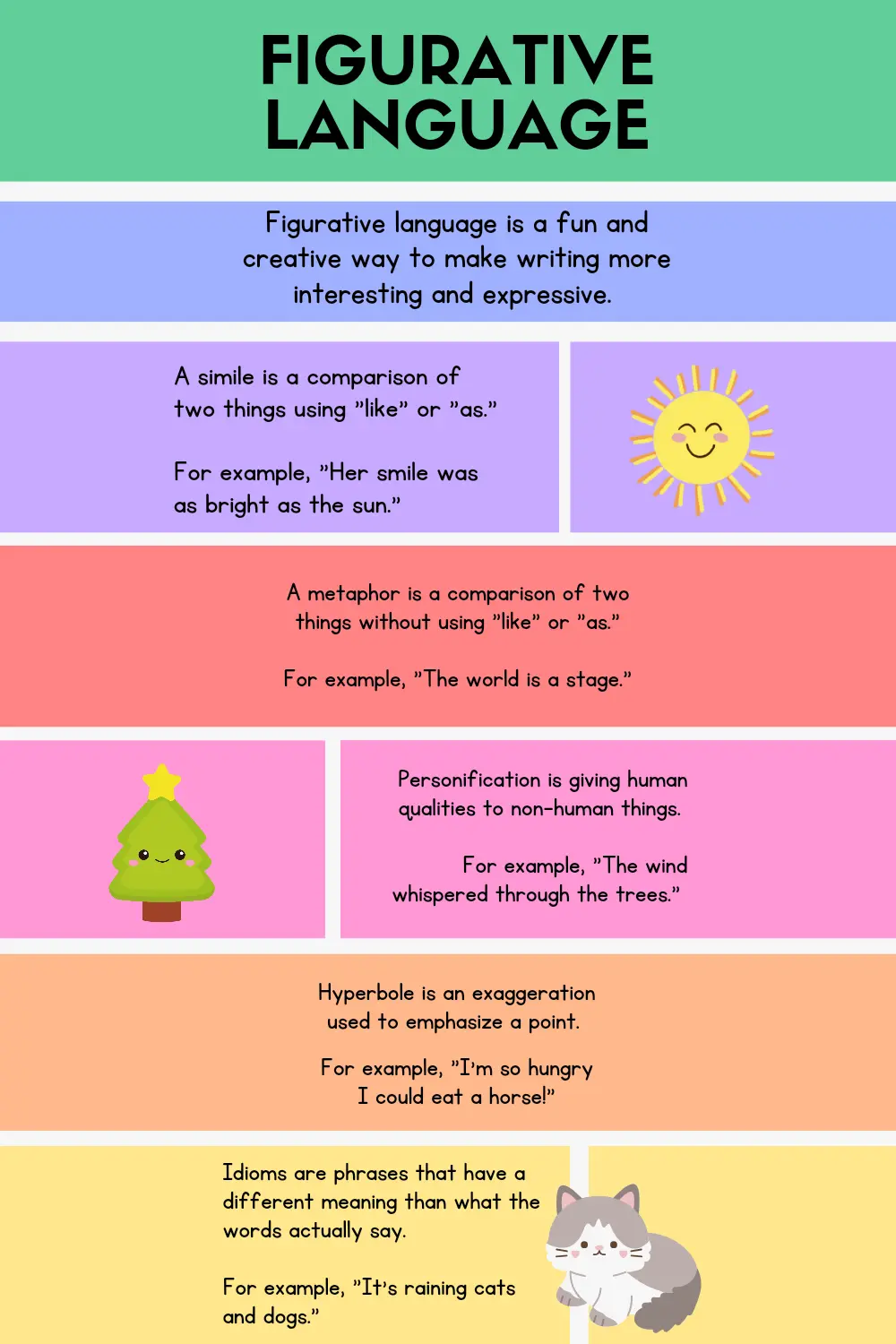
A figurative language anchor is a key phrase or sentence in a text that gives a clear representation of figurative language, for example, metaphor, simile, personification, hyperbole, or idiom. This anchor is the one that helps to express complicated ideas, feelings, or images in a more lively or inventive way.
Take, for example, the sentence “Time is a thief.” The phrase is a metaphor, and it helps anchor the idea that time steals moments from our lives. Recognizing and explaining these can enrich comprehension and interpretation of literary pieces.
Conclusion
The importance of figurative language is not what is expressed but how it makes ordinary language superior and more expressive. It helps to manage information not just at the level of what is directly stated but also on a deeper emotional level and in terms of subtle aspects, thus making the story more interesting and rich for the listener or audience.
FAQs
What are the techniques I could use to detect the figurative language in a text?
To understand and identify figurative language, start to look for phrases or expressions that do not mean what they say. Observe similes and metaphors, hyperboles as well as explanations that give life to inanimate objects (personification), and also idioms and expressions. Additionally, context, or rather, how a phrase is used along with the message it conveys, can be great hints into this.
Are idioms part of the figurative language?
Yes, idioms make up a type of figurative language. Idioms are phrases or expressions whose meaning is not predictable from the usual meanings of the words involved. As an example, “break the ice” is used to start a conversation in a social setting and not break something made of ice.
In what way does figurative language feature in everyday speech?
Figurative language is very common in our everyday speech, and by using it, it is possible to add richness and expressiveness to communication. It is an instrument that helps people express complicated ideas and emotions in a clear yet vivid way. Its typical applications are idioms, metaphors, and similes, which make the conversations more interesting and borderless.
How we've reviewed this article
Our content is thoroughly researched and fact-checked using reputable sources. While we aim for precision, we encourage independent verification for complete confidence.
We keep our articles up-to-date regularly to ensure accuracy and relevance as new information becomes available.
- Current Version
- Apr 16th, 2025
- Jun 1st, 2024
